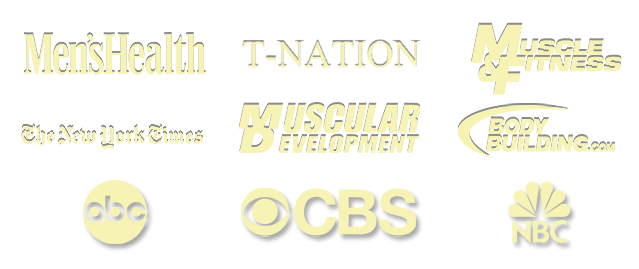
Recent Blog Posts
August 5, 2009
Core Training and Sucking in the Belly Button
For years I’ve been speaking out about the illogicality of trainers who advise clients to “hollow their midsection” when doing crunches. The theory behind such advice is an attempt to target the transversus abdominis, a deep abdominal muscle that forms a corset around the midsection. Problem is, it’s backwards thinking.
Dr. Stuart McGill, one of the foremost researchers on back health, elucidated the perils of the “hollowing” recommendations in a recent issue of the New York Times Magazine. “In research at our lab,” he states, “the amount of load that the spine can bear without injury was greatly reduced when subjects pulled in their belly buttons” during crunches and other exercises.
Kudos to Dr. McGill, who clearly comprehends the importance of taking a holistic approach to training. It’s imperative to understand that muscles function as a unit, not in isolation. Putting too much emphasis on one muscle while ignoring others is a recipe for poor core health and quite possibly lower back problems. Moreover, altering proper exercise form in an attempt to recruit a particular muscle can in itself place the body in an injurious position. Like I mentioned, backwards thinking.
As Dr. McGill goes on to say, “a core exercise program should emphasize all of the major muscles that girdle the spine.” Bingo! And what are the primary core muscles? They include the multifidi, the erector spinae, the quadratus lumborum, the rectus abdominis, and the deep muscles of the abdominal wall (obliques and transversus abdominis). Sure, the transversus is important for core health, but no more so than any of the others.
As for integrating this into a comprehensive routine, focus on training the core from multiple angles in multiple planes. This will help to ensure complete muscle development of the region. Low to moderate reps help to develop absolute core strength, while higher rep sets and static hold moves (such as plank and side bridge) develop core endurance: both are important for a healthy core. And when it comes to performance, forget the “hollow your abs” or “suck in your belly button” advice; it’s faulty interpretation of research that will only serve to impair muscle development and create imbalances between core musculature. Backwards thinking.
Stay Fit!
Brad
August 4, 2009
Cellulite Creams, Pills, and Potions
Want to get rid of cellulite? Then perhaps you’ve thought about using one of those magic creams or treatments designed to smooth out the afflicted area. If so, think again.
As almost every woman knows, cellulite is the term for the dimple-like formations that appear in fatty parts of the body, most often the butt and thighs. What most don’t realize, however, is that cellulite tends to be hereditary; if your mother and siblings have it, chances are good that you will too. Like your height, eye color and hair texture, genetics dictate where fat is deposited and the semblance that it takes on your body. Hence, while some women can be obese with little evidence of cellulite, others can be relatively thin and have cottage cheese thighs.
Why can’t a cream or pill help to reduce cellulite? Because cellulite is actually related to the composition of your skin. Underneath your dermis (upper layer of skin), you have a layer of fibrous connective tissue called superficial fascia. This connective tissue holds down fat into place. However, in many women, the superficial fascia is discontinuous and has “gaps” that allow fat to poke up onto the skin surface in clusters, creating the dimpled appearance associated with cellulite. Thus, there simply is no mechanism for magic cellulite potions to repair the gaps in connective tissue.
The only way to significantly diminish the appearance of cellulite is through dedicated exercise and proper nutrition. By stripping away fat to low levels, there won’t be much fat to press up on the skin. And by adding lean muscle, you’ll help to give the area an even tone and provide a supporting structure for a firm, smooth appearance. Unfortunately, there are no shortcuts.
Stay Fit!
Brad





 Entries (RSS)
Entries (RSS)



